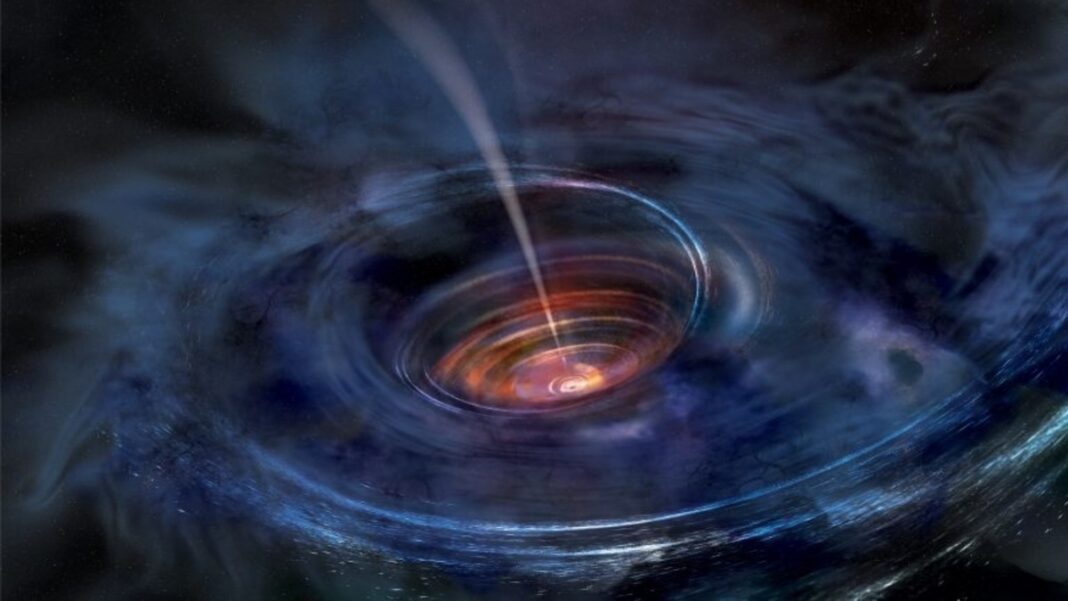UNITED STATES: The Hubble space telescope, which has served as our ears and eyes in space for more than three decades, has once more gazed into the void of space and seen a dramatic black hole meal.
Hubble clicks the final moments of a star
The Hubble space telescope captured in great detail the last moments of a star as it was sucked into a black hole.
The light from a dying star is trapped as the star’s powerful gravitational field forces matter into a confined area beneath it. A black hole is produced by this procedure. Gravity is extremely powerful because the mass is confined to such a small area.
Humans cannot see black holes because light cannot escape from them. Black holes do not move in space to find stars. Instead, they stay patient until a star comes within its proximity, before devouring the gaseous stellar body with its massive gravitational field

Astronomers will learn more about what transpires when an errant star falls into a black hole’s gravitational abyss after Hubble detects a tidal disruption event. Nearly 300 million light-years away in the galaxy ESO 583-G004, the AT2022dsb event took place.
Additionally, the event’s light was detected by Hubble’s great ultraviolet sensitivity. The spectroscopy offers forensic clues to the black hole homicide and the light contained traces of hydrogen, carbon, and other elements.
Astronomers have used a variety of telescopes to find roughly 100 tidal disruption events surrounding black holes, according to NASA.
“However, given the length of the observation, there are still surprisingly few tidal events visible in ultraviolet light. This is particularly detrimental because UV spectra can reveal a wealth of insightful data”, according to a statement made by Emily Engelthaler of the Center for Astrophysics.
“We’re happy that this knowledge allows us to understand more about what the debris is doing. The tidal event has taught us a lot about black holes. Changes in the fading star’s status take place over the course of a few days or months”, she added
The All-Sky Automated Survey for Supernovae (ASAS-SN or “Assassin”), a network of ground-based observatories that scans the extragalactic sky around once a week, made the first observation of the black hole’s furious feast on March 1, 2022.
The explosive impact, according to scientists, was close enough to Earth and bright enough to allow Hubble astronomers to conduct ultraviolet spectroscopy for a longer duration than usual.
A tremendously brilliant, hot, doughnut-shaped area of gas has replaced the old star, according to the interpretation of the Hubble spectroscopic data.
“On the edge of that doughnut, we are searching. We are witnessing a stellar wind being projected at us from the black hole at a speed of 20 million miles per hour, sweeping over the surface (three percent the speed of light),” CFA’s Peter Maksym said.
“We are still trying to process the event in our minds. The star is torn apart, and the resulting debris is entering the black hole. As a result, some models give you the impression that you understand what is happening, as well as what you actually observe,” he added.
The study may provide important insights into the mechanics of black holes and how they function in the vacuum of space.
It is important to note that practically every galaxy, including our own Milky Way galaxy, has a black hole at its centre.
Also Read: JWST Clicks Stunning Image of Southern Ring Nebula, Reveals a Stellar Surprise



